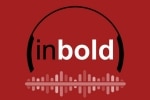Executive summary
In the Middle East and North Africa (MENA) region, family businesses face significant common challenges.They are dealing with problems of generation transition, an increasingly challenging business environment, and business models growing in complexity.
Family businesses therefore need to embark on an institutionalization journey that is customized to their particular needs and that seeks: a definitive separation between business and family, with clear mechanisms and appropriate bodies governing the activities of each; an adaptive strategy that ensures competitiveness and includes regional growth and even global diversification beyond the home country; and sustainable and differentiated corporate enablers that shape the company’s identity and endure beyond the founders’ departure from the business.
Although each family business has unique features and will have a different institutionalization starting point, there are four general profiles drawn from actual examples. The first, the “one-man show,” owes its success to one or a few family members. It lacks strong non-family corporate capabilities. The second, the “business–family merger,” possesses a growth strategy and has developed differentiating capabilities. Its family governance is, however, typically weak and does not distinguish between family wealth and corporate assets. The third, the “going concern–going nowhere,” is a legacy organization with large, established businesses and a strong market position. It cannot achieve its growth and profitability objectives because it has not properly defined a corporate strategy nor developed the capabilities to deliver it. The fourth, the “institutionalized family business,” has strong performance because its institutionalization journey is over. It runs the risk of complacency.
To determine their next steps, family businesses must first understand which priorities they need to address most urgently as they progress toward institutionalization. Once they have completed that assessment, they will be able to take action in one or more of the following areas: protect and strengthen their family and business foundations; develop a capabilities-driven growth strategy that will give them the right to win; and reinforce their corporate functions and resources.
Example of a “one-man show” profile
Family business overview:
Industries: Hospitality, healthcare, and real estate
Ownership: 100% family owned
Founder: Two, one of whom is still involved in the business
Generations: Currently witnessing ownership transition from the first to the second generation and management transition from the second to the third generation
Number of family members: Around 100
Characteristics:
- Complex dual-entity ownership in which the business is owned by two legal entities, which could lead to conflicts of interest in the future (all members are shareholders of one entity and some are shareholders of the other entity).
- No separation between oversight, governance, and management; an executive committee composed of four family members from the second generation plays a dual governance and management role for both legal entities. All business decisions are taken by the executive committee.
- Limited transparency of the activities and performance of the business; family members who are not a member of the executive committee do not receive any update on the performance of the business.
- Family tension created because only select members are involved in the business, which is leading to a decrease in the level of commitment of others in the family.
Key recommendations:
- Reduce the family ownership to one entity, while ensuring that family members’ stakes are maintained fairly.
- Develop a corporate governance model that clarifies the roles and responsibilities and separates management from oversight.
- Define the family employment policy clarifying the eligibility of family members to be involved in the business at the management or the board level.
The “business–family merger”
The “business–family merger” has a strategy to grow the business, and has developed its differentiating capabilities. To a lesser extent it has developed its corporate enablers, but family governance is weak.
Weaknesses:
The “business–family merger” makes little or no distinction between family wealth and corporate assets, services, and rights. The result is conflict between the business’s priorities and family members’ desire to maintain liquidity for personal requirements. Family members rely on the business for income (e.g., demanding high dividends), employment (e.g., taking key positions away from capable managers), and other personal use (e.g., using corporate resources for personal services).
Institutionalization status:
Governance: Nominal — must be urgently addressed
Strategy: Developed — no need for action beyond continuous improvement
Corporate enablers: Insufficiently developed — needs more attention
Institutionalization imperatives:
Governance should be a top priority. Family members should agree on a family governance model that sets the boundaries in areas where the family and business overlap, such as ownership rights, asset categorization (family wealth versus business assets), liquidity principles, family council setup, and family employment policies. They should agree on a family constitution or set of agreed principles that can maintain family unity. The governance model should be simple and fair to appeal to all family members across generations. Family members could also agree to set up a family office that provides a range of services such as philanthropy and concierge services without using company resources, and align on a fair charging mechanism. The family/business separation will help develop the corporate enablers that have been neglected. A resilient family governance model also reinforces the capabilities-driven strategy by making decision-making more focused, especially as the family grows larger with successive generations.
Example of a “business–family merger” profile
Family business overview:
Industries: Heavy machinery, trading
Ownership: 100% family owned Founder: One, who is not involved in the business anymore
Generations: Currently undergoing ownership transition from the first to the second generation. Business managed by the second generation, third generation not yet involved.
Number of family members: Around 80
Characteristics:
- Lack of clarity on the categorization of assets, i.e., what belongs to the family and what is a business asset.
- Difference in the liquidity requirements of family members, and hence disagreement on whether portfolio assets should be consolidated or distributed.
Key recommendations:
Review current portfolio composition and determine action to be taken on each asset: whether to manage under the family group (based on the group strategy and business needs), to liquidate and redeploy capital, or to distribute to family shareholders.
For the liquid active investments (e.g., shares in a listed bank), coordinate at the very least their management in order to maintain control and influence (e.g., board seat).
Agree on the principles and policies governing the family business.
The “going concern–going nowhere”
The “going concern–going nowhere” is a legacy organization with large, established businesses and a strong market position, but which can no longer achieve its growth and profitability objectives.
Weaknesses:
The “going concern–going nowhere” has not adequately defined a corporate strategy nor developed the capabilities to deliver it. Such businesses have often diversified their activities across various sectors and geographies after their core market reached saturation or through opportunistic expansions. In doing so, these businesses limited the potential value they could add to the operations of companies in their portfolio. These family businesses often find that they are not nimble enough to respond to changing market conditions.
Institutionalization status:
Governance: Developed — already addressed
Strategy: Insufficiently developed — the business strategy lacks a capabilities focus
Corporate enablers: Nominal — must be urgently addressed
Institutionalization imperatives:
The “going concern–going nowhere” has yet to identify its core capabilities and focus on them. It can do so by building on the fact that it already has proper family governance. The shareholder council, aided by solid reporting systems, should play a critical role in this exercise. It should then set the business objectives and define the target portfolio composition, based on the core capabilities. As part of this process, the firm should review existing businesses in its portfolio and identify the ones to divest, hold, fix, grow, or integrate. It may find that certain business units that were either early acquisitions, important to the founder, or sentimental favorites have consistently underperformed the market and generated significant losses. In such cases, it should consider disposing of them or shutting them down.
Example of a “going concern–going nowhere” profile
Family business overview:
Industries: Food, construction, real estate
Ownership: 100% family owned
Founder: Two, still involved in the business
Generations: Currently witnessing ownership transition from the first to the second generation and management transition from the second to the third generation
Number of family members: Around 100
Characteristics:
- Rapidly growing family size putting pressure on wealth creation.
- Business slowdown in local market creating the necessity for the family business to invest in different regional and global markets.
- Management of future growth (new sectors, geographies, and asset classes) not compatible with current structure and resources.
Key recommendations:
- Define the core capabilities of the family business and articulate the stakeholders’ growth aspirations and strategic priorities.
- Develop the strategy of the business by leveraging current core capabilities to expand into new geographies in emerging markets that have a different risk-return profile to markets the firm is currently in; expand in adjacent sectors and geographies.
- Reorganize operations around the core market and form country units that report to the CEO to leverage centralized capabilities.
The “institutionalized family business”
The “institutionalized family business” delivers strong results because it has completed the institutionalization journey; it has proper governance, a capabilities-driven strategy, and well-developed corporate enablers.
Weaknesses:
The “institutionalized family business” can be complacent. It can struggle to dispose of underperforming assets, especially ones the family is emotionally attached to.
Institutionalization status:
Governance: Developed — already addressed
Strategy: Developed — already addressed, must be revised frequently
Corporate enablers: Developed — already addressed, must be revised frequently
Institutionalization imperatives:
Such businesses must maintain a dynamic strategy and continuously grow their differentiating capabilities, in order to avoid backsliding. This involves monitoring performance to ensure it is in line with the set targets and initiate corrective actions if needed. They should also analyze recent market developments (e.g., competition, technology, disruptions) and assess those developments’ impact on the business. Finally, they should regularly review and update their strategy, performance targets, and capabilities requirements to account for market changes.
Conclusion
Many family businesses have already begun the transition to a fully institutionalized model. Each journey should be distinct, sensitive to the different needs and starting points of family conglomerates. Some have even addressed the majority of their internal challenges and are focused on a disciplined execution of their investment strategy. As MENA family conglomerates look beyond their institutionalization journey, they need to take a step back and reflect on their long-term expectations in terms of wealth creation, growth, and liquidity. Ultimately, family businesses should recognize that beyond any required governance and ownership initiatives, their only sustainable source of value creation comes from ensuring they have a solid growth strategy for the business, and the ability to execute their defined initiatives, irrespective of ownership type and control.
Contact us



















Menu